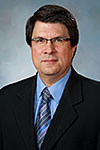UHV symposium to explore how community center, baseball impacted segregation
When the Victoria Rosebuds Double A baseball team played home games in 1958, black players could be found on the field, but the stands at Riverside Stadium remained segregated.
African Americans attending games were forced to sit in designated “colored” bleachers next to right field. It would be three more years before Riverside Stadium was integrated, capping a 20-year account of how a former black high school booster club made its mark on Victoria.
That story will be told at the Thursday University of Houston-Victoria A.D. Sheffield Symposium on African American History. The event will begin at 6:30 p.m. in the Alcorn Auditorium on the second floor of UHV University West, 3007 N. Ben Wilson St. The symposium is free and open to the public.
“It’s important for us as a community to understand the African American experience in this city and the surrounding areas,” said Ed Byerly, a history professor at Victoria College. “This is a part of our history that hasn’t been explored often, partly because documentation is rare. To re-construct history, you have to do it with a lot of personal interviews, but it is worth doing. It helps to understand who we are as a community.”
At the symposium, Byerly will present “Baseball and Community Organization, the Story of Victoria’s Carver Center.”
F.W. Gross High School opened in 1939 to serve black students. A booster club, called the F.W. Gross Athletic Council, was organized the next year to provide support for the athletic programs. The council bought equipment for sports teams and purchased playground equipment.
“The council provided physical activities for children, but it also was involved in political activism,” Byerly said.
Byerly said the council and school district didn’t always agree on how money should be spent. In the late 1940s, the council decided to withdraw from the school and become an independent community center. The council purchased land in 1949 to build the George Washington Carver Center.
C.A. Dudley, a former Negro League baseball player, was a doctor in Victoria at the time and one of the leaders of the booster club and later the community center. Dudley made sure the center’s plans included a baseball diamond, Byerly said.
“Baseball became the glue that held the group together,” he said. “During the early 1950s, the Carver Center was an important symbol of pride in the African American community. It also on some level became an issue because some younger people in Victoria were beginning to strike out against segregation. The Carver Center represented the segregated past.”
The symposium is part of UHV’s Black History Month celebration. Started in 2015 to recognize contributions to the Victoria African American community, the symposium is named in honor of A.D. Sheffield, a Victoria mortician who also served as the vice principal of the Victoria school for black students. At a time when society had clear divisions along racial lines, his mortuary embalmed black and white residents.
“In addition to Mr. Sheffield, there are a number of other African American leaders who played a major role in helping shape Victoria,” said Jeffrey Di Leo, dean of the UHV School of Arts & Sciences. “This symposium has helped highlight those leaders and what they have accomplished. I’m excited to hear about Dr. Dudley and the others involved in the Carver Center.”
Byerly said another key figure of the time period was John Wesley Huff. Huff and Hamp Upton secured box seats for a Rosebuds game. When they showed up, they were escorted out of the seats they purchased and told to sit in the colored section. Huff complained to the Victoria City Council, arguing the stadium was publically owned, but he was told the rules were up to the owner of the Rosebuds since the team leased the stadium.
In 1960, several members of the Carver Center filed a lawsuit to end the segregation of Riverside Stadium. It was settled out of court, but the end result was integrated seating in 1961.
Huff’s minutes that he took during the F.W. Gross Athletic Council meetings shed some light into what happened at the time, Byerly said. In fact, Huff mentioned in the minutes the importance of passing down what happened to future generations.
“The minutes serve as a reminder that life in Victoria has not been easy,” Byerly said. “There have always been challenges we’ve had to overcome. But we do overcome them, and that’s what makes this community strong.”
The University of Houston-Victoria, located in the heart of the Coastal Bend region since 1973 in Victoria, Texas, offers courses leading to more than 80 academic programs in the schools of Arts & Sciences; Business Administration; and Education, Health Professions & Human Development. UHV provides face-to-face classes at its Victoria campus, as well as an instructional site in Katy, Texas, and online classes that students can take from anywhere. UHV supports the American Association of State Colleges and Universities Opportunities for All initiative to increase awareness about state colleges and universities and the important role they have in providing a high-quality and accessible education to an increasingly diverse student population, as well as contributing to regional and state economic development.
Jeremy Shapiro
361-570-4350






